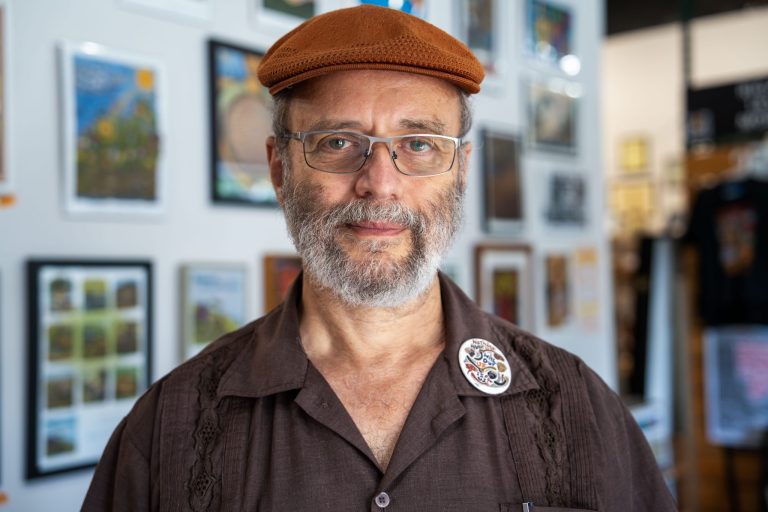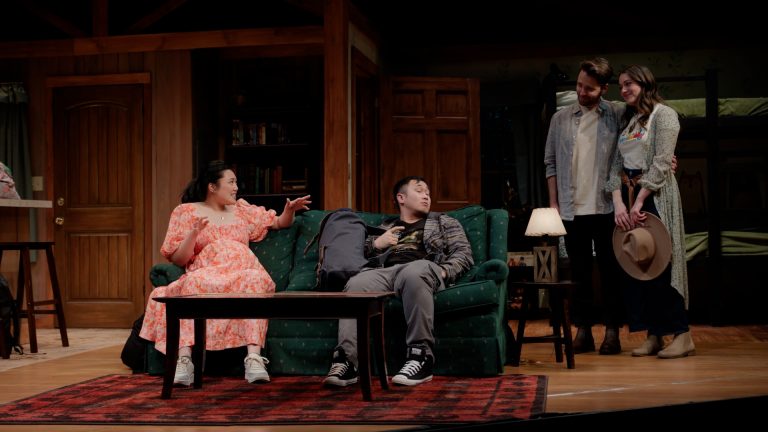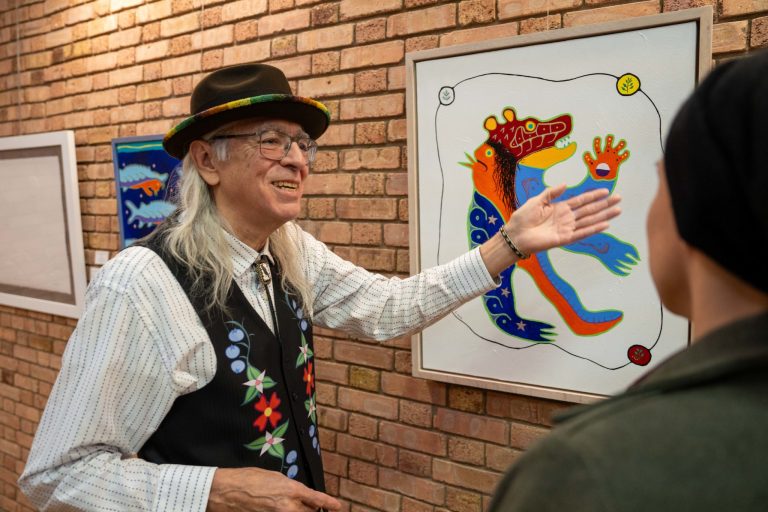Perpetual Inspiration Machine from Works Progress on Vimeo.
What happens when creating work for a gallery audience isn’t enough?
During our visit to visual artist Carolyn Swiszcz’s home studio in West Saint Paul, she shared a book of sketches she’d done back in grade school. From the time she was a kid, Carolyn was making things, whether it was pencil drawings of her favorite celebrities, Super 8 movies, or paintings and prints.
“I always knew I wanted to be an artist,” she told us, pointing to the portrait she’d made of herself as an adult when she was still in 5th grade. It shows her sitting at an easel, wearing a beret. “It’s funny, looking back, no one ever discouraged me from it, or said, ‘how are you gonna make money?’”
By all measures Carolyn has been successful at turning her creative inspirations into an artistic career. She continues to find the time and passion to make work, evolving her artistic practice as she goes; her paintings have been shown here in Minnesota and in other cities around the country; she’s had a good deal of media attention; manages to sell her artwork; and has received a number of awards and grants, including a McKnight Artist Fellowship in 2009.
Though she says this work has been rewarding, our conversations seemed to circle around an uncertainty about the future; both about the direction of her own work, and the fate of artists and art-making today.
Carolyn isn’t shy about the fact that although her artistic career has been successful, she doesn’t earn a living selling her artwork. This was never her goal or expectation. She’d love to sell more paintings, but is wary of what she calls “the production mode” that some artists are compelled into by the demands of the marketplace. She just wants her paintings to be out in the world, making an impression on people’s lives, rather than in her closet at home.
Carolyn also understands that many artists and arts organizations have an impulse to experiment with more participatory, public-oriented work. The proliferation and popularity of these kinds of artistic projects is one indicator of this trend. Another is what she described to us as the disappearance of the singular artist, even as art-making as a whole seems to be on the rise.
When we met Carolyn to begin working on this video project, these were just some of the questions that were on her mind.
For her, at this moment, it’s no longer enough to make paintings for gallery shows, hoping that others will find value in them. She’s started to return to personal narrative, a feature of her earlier work, and is looking for new ways to bring these stories into the world. More than anything, she seems to be searching for ways to reconcile her practice as a painter with her desire to connect with people, to have an impact on their lives, and to provide something they can enjoy, even as financial circumstances and technology change consumption patterns for art (and so much else).
Carolyn is pursuing these questions in the way she is most equipped to, by making things, experimenting, and keeping her artistic life in perpetual motion. In the case of her latest projects, she is branching out into new media, exploring how her drawings and paintings might be experienced as interactive applications for iPad, or as web-based exhibits. With her Mall Maps project, we see an admittedly reserved person taking risks, pushing herself out of her studio and into direct conversation with people who may not otherwise consider what it is an artist does, all in order to learn more about how to tell stories, and how to connect.
For those of you, like Carolyn, who have a desire to push yourself beyond familiar ways of working in order to connect with new audiences, what kinds of things have you tried? What strategies do you employ to keep yourself inspired?
Shanai Matteson and Colin Kloecker are Collaborative Directors of Works Progress, an artist-led public design studio. Works Progress creates collaborative art and design projects that inspire, inform and connect; catalyzing relationships across creative and cultural boundaries; and providing new platforms for public engagement. You can find them on Twitter at @works_progress.




